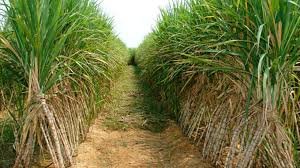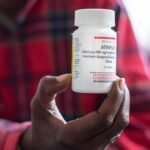By Beatific Gumbwanda
CHIREDZI-Former Tongaat Huletts Zimbabwe (THZ) Agricultural Director and successful sugarcane farmer who is former Chiredzi West MP, Farai Musikavanhu recently gave sugarcane farmers insights to counter the El Nino induced drought in order to maximize sugarcane production this season as climate change is slowly taking toll and affecting agricultural production.
He said farmers should start measuring the water that gets to the field, irrigator to land ratio, irrigation cycle, drainage, positioning of plant cane, nitrogen rates, managing dry offs as well as maintaining workers welfare.
“The first thing is about measuring water that gets to the field edge. It is also important that a farmer knows the amount of water they got. The farmer should measure water that gets into individual fields by placing liter gates, especially on furrow irrigation which is familiar with most farmers but also applies to pivots measuring nozzle sizes and their discharges.
“A farmer should have knowledge on irrigator to water ratio. On furrow irrigation, irrigator should work with a minimum of 21 liters per second up to 38. A farmer can then calculate the hours worked in order to get the liters and area covered,” said Musikavanhu.
He said sugarcane releases about nine millimeters of water through evapotranspiration and farmers should be able to replace the lost water.
“Sugarcane, on a hot day, loses 9 millimeters of water through evapotranspiration so a farmer should be able to replace the water being lost. We have what we call total available moisture (in the soil), there is need to deplete half of it and replace half so that the crop will not be stressed,” he said.
He also expressed the need to know the irrigator to land ratio which enables irrigators to be versed with the needs of the area they are focused on.
“An irrigator at most can irrigate 5 ha, so if one has 20ha, a minimum of four irrigators are needed but during this time where there are no rains, one should reduce hectares to around 3 per irrigator meaning six to eight irrigators are needed.
“Irrigation cycle implies the period a farmer take to irrigate the field, maybe after 3-4 days. Each irrigator should be given his/her own field/area as this will give them more knowledge of the area they are working on including gradient, time and the amount of water needed without losing it. This gives them ownership of the land and they can relate to it. This is aimed at increasing water use efficiency.
Musikavanhu said sugarcane does not need wet feet even if it is extra hot as the macro pores of the soil need to always stay open and this is only enabled by drainage.
“Even when it becomes extra hot, sugarcane does not need what we call wet feet, it needs to be irrigated much but when the water table rises, its roots (80 percent) is within the top 30 centimeters and should always be free from water logging.
“If the water table rises, drains should release the water so that the macro pores will always be open for them to breathe freely to avoid over applying. Physiological wilting (if evapotranspiration exceeds 9mm to 12 mm) it can experience heat while the soil is wet,” added Musikavanhu.
He also urged farmers to harvest lost water through surface and subsurface drainage for reuse.
“Subsurface drainage harvests water underneath while surface harvests lost water during irrigation. When I got to my farm, there was a single dam but now I have nine dams which I use to store water I harvested with surface drainages. Subsurface water is the one with salt but the surface one is purely fresh water.
“Even if the water duty gets reduced from the dams, with your drainage networks, you will be an extra mile. Harvesting water helps in various ways. We are no longer receiving rains as we used to. Sometimes it come in excess at a shortest period of time so it should be harvested,” he said.
Musikavanhu highlighted that during this dry spell, farmers won’t be getting the 181/2 mega liters which is divided as 15 mega liters from irrigation and 31/2 rain, farmers should be able to control nitrogen rates.
“15 mega liters per/ha and 3 and half rain=18 mega liters and we are not getting it, you should also reduce your nitrogen (1,25kgs Nitrogen per ton cane) Urea has 46 percent Nitrogen so if you have 300 kilograms of Urea × 0.46 you get Nitrogen, multiply it by 1.25 is your yield. So if your yield is dropping from 110-80 you can adjust your Nitrogen but maintaining the ratio of 1.25 Nitrogen,” said Musikavanhu.
He also urged fellow sugarcane farmers to devote a piece of their land into maize production which they will use to feed their workers in order for them to give full attention on production than fending for their families.
“I have given my workers a bucket of maize each for free and I have also planted more maize. This helps workers to be more stable and focus on their work a lot more,” concluded Musikavanhu.
Musikavanhu, who is an Agronomist by profession was responsible for production at the Zimbabwe’s sole Sugar producer, Tongaat Huletts Zimbabwe (THZ) where he was employed as the Director responsible for Agriculture.
He is also the Director of Puwevhu Enterprises which has more than 150ha in Mkwasine Estates and majors in Sugarcane production and livestock production.







